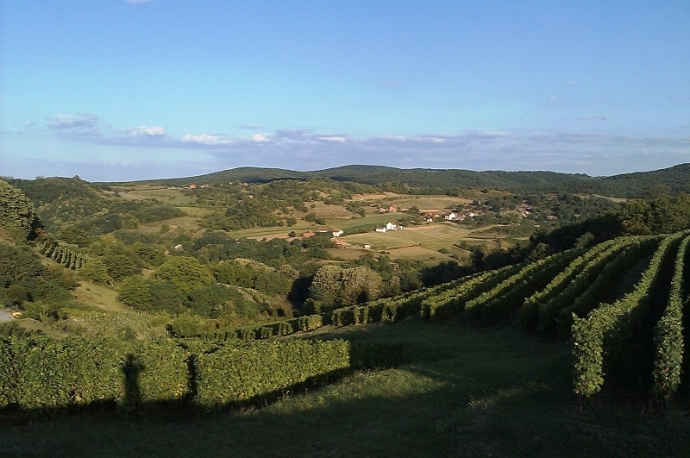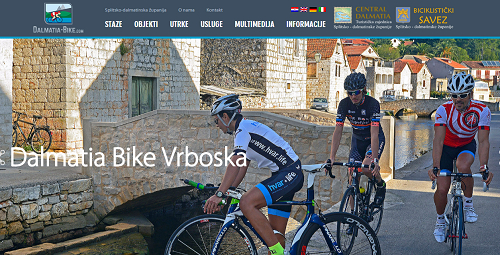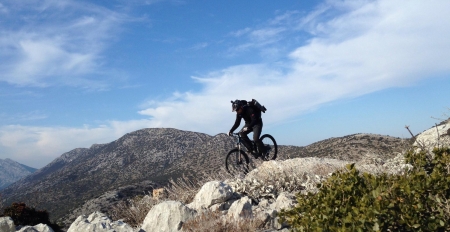Croatia is one of Europe's most exciting tourist destinations, and there are several initiatives all over the country adding a little colour to the overall offer, and we went to investigate one of them between Croatia and Hungary, the Greenway Cycling Route. It is about cross border relations and building up tourism and eco-tourism in the area along the Danube-Drava Rivers (uz rijeke Dravu I Dunav).
I met up with Mislav Pavošević from the Osijek Tourist Board, as he has been part of the project. He knows the area well and contributes to the project that has been created in Hungary-Croatia IPA Cross-border Co-operation Program. The book we discussed “Greenway” is primarily about Slavonia and the southern part of Hungary for cyclists and adventurist hikers through the Greenway.
What is the Greenway?
Greenway cycling route is 378 kilometers traveling through more than 20 villages and cities connecting Croatia to Hungary. The adventure will takes you along the river Drava and Green space. The most important part is that cyclists won’t be traveling on crowded roads, instead traveling through designated paths and roadways that don’t experience heavy traffic. Cyclists will feel like they have traveled back in time through the history of ancient villages, castles, and ancient ruins of past empires. Adventuring through the forest, meadows, hillsides, valley, and Farmers fields and vineyards.
“Greenway begins in Hungary, in Kemés, and links Adorjás – Kόrόs – Diόsviszlό – Terehegy –Harkány – Drávaszabolcs. From the border crossing at Donji Miholjac, Greenway continues into Croatia and includes the following places: Donji Miholjac, Ivanovo, Bockovac, Viljevo, Kapelna, Kućanci, Bokšić, Beljevina, Đurđenovac, Feričanci, Orahovica, Našice, Kutjevo, Bektež, Čaglin and ends in Latinovac where is the Greenway Center Latinovac.”
.jpg)
How difficult was the Greenway Route to put together in terms of Organizing and putting it altogether?
“It was important to present it in a way that makes complete sense for the cyclist. The reader will be able to take it along with them on the bicycle route, as the book contains a great deal of detail to help explain the routes, culture, accommodations, history, gastronomy and more. The book itself took some time to create as the group literal went page by page. This was to make sure it was accurate. If something was not completely clear or did not sense then we had to go back and look at it. Every direction and turn was made accountable with great detail.” If the notes or directions did not feel right or make sense we were able to go back to that particular part of the route and re-examine to ensure credibility and reliability. To demonstrate is a brief passage (PG 79 sec. Čaglin) that does an amazing job to help the rider.
“Easily meandering through the thick forest you’ll be thrilled with the scenery. Ceremošnjak is a village with the preserved tradition of architecture (narrow and longish houses with the porch) just as the village on the very beginning of this bike route. In the centre of the village there is a Saint Peter and Paul’s Church and the big village fair -˝kirvaj˝ (patron saint’s day) is in the beginning of the summer, on the 29th of June. This way down the hill the road starts going down easily and goes near the Makloševac village where on the left side you will see a favorite outing for the locals, the Lapovac Lake near Našice city.”
One knows that a GPS device could never give this great detail of what to see and where to turn. Human error can also occur too if a map is not read correctly, so it is important to have reference points.
Many different facts were put into the book for accommodations, tourist information, family farms, medical services and emergency numbers. One concern that some bike riders face is “what happens if you need to get the bike fixed, where would you go?” There is the answer for the problem with the mention of bike shops and roadside assistances. The answers are provided in the notes with emergency numbers, location, and address just to take away the stress.
.jpg)
What to see and do?
We talked about what to see and do which seemed like endless possibilities. It was almost like bragging rights as the route takes cyclist through vineyards’ where you could stop and taste premium quality wines. Depending on the timing (or just blind luck) you might stumble on to a local festival to join in on the celebration. It is always good to check ahead so you can plan which one to choose from as there is an abundance of events from Music, Art, Food and wine just to list a few. The local people of the area invite you offering their home-made products, a variety of wines, foods, and desserts. Traditional Slavonian foods such as ˝gulaš˝- goulash, Cobanacs Stew, “fiš paprikas” (fish stew with hot red pepper), wild boar and more. Who can complain - the area is known for its hospitality.
After a brief stop to refresh and trying local cuisine carrying on the journey cycling through the countryside, one can only guess what they will see next. The route takes us through the history of past empires that left their buildings in ruins. Another fortress still stands today as some were converted into castles. There is something that connects us to the culture of the land and people as you get off your bike to walk around the castle. Here are a few castles worth mentioning that you can visit along the route: castle Draskovich park (Draskovic), Mailáth Castle (Donji Miholjac), countTurković’s Castle (Kutjevo), Castle of CountPejačević, (Našice).
One also can discover new terms such as Enology, which is the science that deals with wine and wine making. Every region has its own specialty as there is a multitude of different grapes grown. Hungarian wines that are popular are Chardonnay and Riesling. Hungarians are also known for their Liqueurs in the southern region. One particular one that stands out for being famous is “Unicum”. This liqueur is made by soaking/stepping of 40 Hungarian plants (The recipe is strictly saved at the family Zwachj) One should google it as it has an interesting history.
The Mission of Greenway Project?
The mission is development of thematic cycling route is bring both sides Croatia and Hungary to share their stories of history, heritage and culture. Promoting though eco-tourism the following: culture, gastronomic and ethnic traditions and diversities The aim is to get people involved in building economic growth to the area and support the communities in the rural area. “The project has been created and implemented by two associations from Hungary, Sustainable Ormánság Nonprofit Ltd, and Together for the Kemes Area Children Foundation, and two from Croatia Community Foundation Slagalica from Osijek and Eco Center Latinovac, from Latinovac.”
.jpg)
I had to ask “what is the next project?” He is currently working on another route that travels from Osijek to Szigetvar. He ventured into some of the details from famous battles and heroes of the region. From the start in Szigetvar is “The Siege of Szigetvár or Battle of Szigeth” during the Otto Empire 16th century and the famous battle was fought between the defending forces. Nikola Šubić Zrinski a Croatian Nobleman and General stopped the invading Ottoman army at the siege. However this another story for next Thematic Cycling route through Croatia and Hungary.
Here is a link to the PDF file of Greenway Book
IstražI Zelenu staZu - zaklada-slagalica.hr
zaklada-slagalica.hr
IstražI Zelenu staZu TURISTIČKI VODIČ za bicikliste i pješake avanturiste Zelenom stazom Kémes - Zeleni centar Kemeš - Adorjás - Kórós - Rádfalva ...
Sources:
Contributions
Written texts about Croatia: Mislav Pavošević (Travel Slavonia and travel guides - Association for promoting culture and tourism travel, Osijek, Croatia)
Articles about Hungary: Orsolya Kovacs (Association for sustainable Ormánság Kémes, Hungary / Fenntartható Ormánság Nonprofit Kft., Kémes, Hungary) Text of Latinovć and capillary paths: Andrea Rutnik (Eco Centre Latinovac, Croatia)
Editors: Branko cough, Julian Mladenovska-Tešija
Translation: Lingua - Center for education and services prijevođenja, Mislav Pavošević, Orsolya Kovacs
Source
http://www.tzosbarzup.hr/en/
http://www.ormansag-zlatnadolina.org/
http://www.zaklada-slagalica.hr/hr/slagalica-ipa/
“The riches of Slavonia and Ormánság can be expressed in many ways, but mostly through our traditions, people and natural resources of this region that has prospects for better future for all its inhabitants. “
.jpg)




.JPG)





